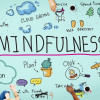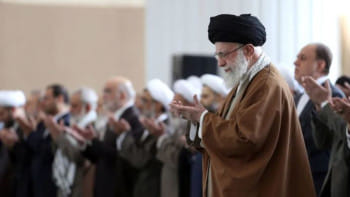The art of mindfulness

Mindfulness is about moment-to-moment living, being intentionally aware of the present moment. This means you deliberately pay attention to your thoughts and feelings, but you do not react to them, do not label or judge them, so you are freed from your normal tendencies or patterns of conditioning. Thus mindfulness involves both concentration (a form of meditation) and acceptance.
The goal of mindfulness is to achieve a state of alert, focused relaxation. Unless you are naturally Zen, to do so may require reprogramming your mind to think in healthier ways. This includes new ways of living, listening and responding to life. In practicing mindfulness we learn to become aware of our thoughts, emotions, feelings, and behaviour so we can interrupt stress cycles before they get out of control.
Stress is the body's reaction to a perceived threat from change. Change is constant; today's environment moves and changes at lightning speed, leaving people overwhelmed with information, asked to deliver more, work longer hours, with less personal time for renewal activities.
According to 50% of the workforce in the US, job stress is a major problem. The result is self-inflicted attention deficit disorder, exhaustion, lack of focus, reduced health, and burnout. This leads to lower job satisfaction, morale, and productivity, not to mention negative repercussions for health.
As stress is less about the actual event and more about our perception of the event or the way we relate to it, to reduce stress, we need to change the way we think of it. Mindfulness improves our ability to respond to stress by helping us identify stressors and deal with them properly.
Jon Kabat-Zinn, a guru who established mindfulness-based stress reduction to hospitals in the 70s to help patients suffering from chronic pain, suggests a few techniques to help us be mindful. Sit quietly and focus on your natural breathing or on a word or 'mantra' that you repeat silently.
Allow thoughts to come and go without judgment and return to your focus on breath or mantra. Notice subtle body sensations such as an itch or tingling without judgment and let them pass. Notice each part of your body in succession from head to toe. Notice sights, sounds, smells, tastes, and touches. Name them 'sight,''sound,''smell,''taste,' or 'touch' without judgment and let them go.
Allow emotions to be present without judgment. Practice a steady and relaxed naming of emotions: 'joy,''anger,''frustration.' Accept the presence of the emotions without judgment and let them go. Cope with cravings (for addictive substances or behaviours) and allow them to pass. Notice how your body feels as the craving enters.Replace the wish for the craving to go away with the certain knowledge that it will subside.
Integrate what you learn into your busy life in the following ways: anchor your day with a contemplative morning practice (e.g. breathing/meditation). Before entering the workplace, remind yourself of your organisation's purpose and recommit to your vocation as a leader.Throughout the day pause to be fully present in the moment before undertaking the next critical task. Review the day's events at the close of the day to prevent work stress from spilling into your home life.
Before you enter your home, again remind yourself of your purpose and your goals as far as your family and personal life are concerned. And before going to bed, engage in some spiritual reading.
Shazia Omar is a yoga instructor at Studio 107. Details about her class schedule are available online. www.shaziaomar.com and she may be reached at [email protected]

 For all latest news, follow The Daily Star's Google News channel.
For all latest news, follow The Daily Star's Google News channel. 








Comments